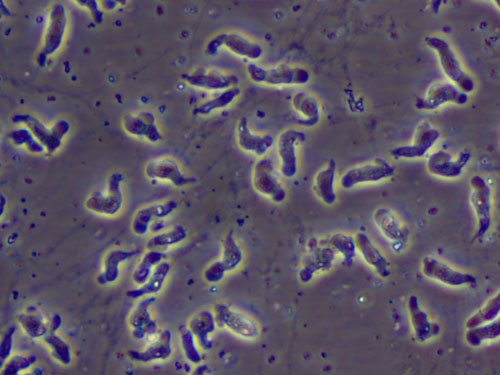Deadly Amoeba Infiltrates Second Louisana Water System

This article was provided by AccuWeather.com.
The Centers for Disease Control (CDC) has detected the brain-eating amoeba, Naegleria Fowleri, which has killed three people in 2013, in five water supply test sites throughout the DeSoto Parish in Louisiana, federal health officials announced Wednesday.
The testing began when a four-year-old was killed after becoming infected by the amoeba in the St. Bernard Parish in August.
@TheLensNOLA tweeted: "State Sen. J.P. Morrell urges increased chlorination standards, after another parish tests positive for amoeba. http://www.nola.com/politics/index.ssf/2013/10/after_another_parish_tests_pos.html ..."
Additional Relevant Tweets and Social Media Reaction
Following the incident, the CDC was able to confirm the presence of the amoeba in the home's water supply and began performing precautionary testing elsewhere.
Department of Health and Hospital (DHH) officials selected the DeSoto Parish Waterworks District No. 1 water system for additional testing because the area was the site of one of two 2011 Naegleria fowleri-related deaths in Louisiana, the DHH said in a press release Wednesday.
Get the world’s most fascinating discoveries delivered straight to your inbox.
RELATED: Brain-Eating Amoeba Case Linked to Warm Water Second Brain-Eating Amoeba Case Emerges in August Heat Brain-Eating Amoeba Discovered in Louisiana Plumbing System
DeSoto Parish Waterworks District No. 1 is one of 14 water systems in the parish and services 4,980 customers.
"We do not know how the ameba entered the water system in the [St. Bernard] parish and we may not really know for sure," Christina Stephens, communications director for the Lousiana DHH, told AccuWeather.com in late September.
"We do know a higher level of chlorine residual than what was found in some areas of the system is necessary to control the ameba," Stephens said.
After the amoeba was detected in St. Bernard parish, many suggested Hurricane Katrina damage or population decrease following the storm could have played a role.
The system that contained the amoeba in St. Bernard repaired more than 1,000 breaks in its lines following Katrina.
"It has also seen a significant population drop since the time before the storm, which means fewer users and potentially less water moving through the system," Stephens said.
While it has not yet been confirmed how the amoeba entered the system in the St. Bernard and DeSoto parishes, presence of the amoeba has previously been linked to both heat and drought conditions.
The amoeba is known to be thermophillic and can thrive in warm, shallow water. Historically, infection from the amoeba has occurred as a result of swimming or diving in warm freshwater lakes and rivers.
A free chlorine burn was scheduled to begin Thursday in the DeSoto parish to raise the chlorine level to an amount which will eliminate the risk of exposure to the amoeba, the DHH said.
The chlorine burn will last for 60 days after the system reaches the required level.
"I can tell you that there is no state or federal regulation that specifically addresses controlling an ameba in the water supply," Stephens said.
© AccuWeather.com. All rights reserved. More from AccuWeather.com.


